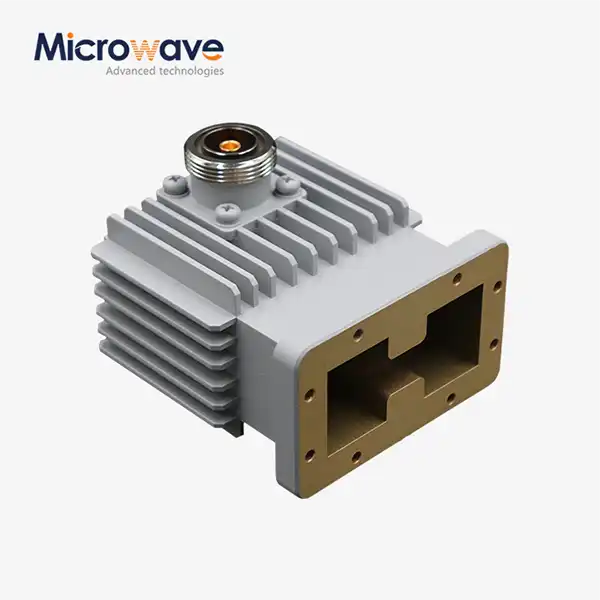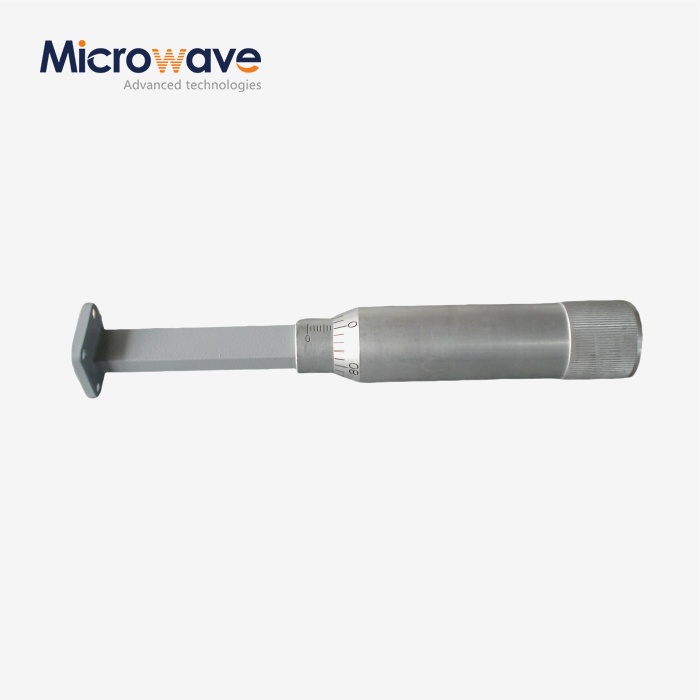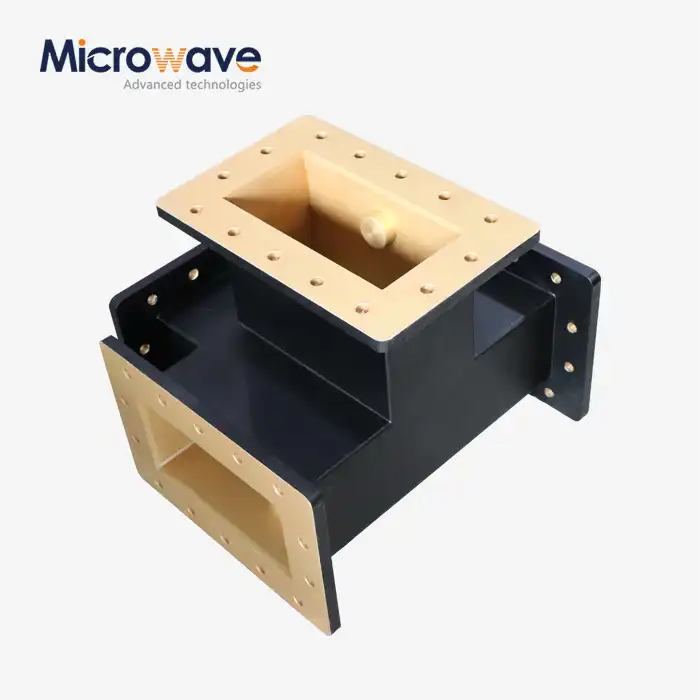5 Applications where adding attenuation is a plus
In RF and microwave systems, engineers constantly battle signal distortion, equipment overload, and impedance mismatches that compromise system performance and damage expensive components. When high-power transmitters overwhelm sensitive receivers or when reflected signals corrupt measurement accuracy, the solution often involves deliberately reducing signal strength through controlled attenuation. A Coaxial Variable Attenuator serves as a precision tool that not only protects equipment but also optimizes system performance across telecommunications, aerospace, defense, and testing environments where signal power management determines success or failure.
Impedance Matching and Reflection Minimization with Coaxial Variable Attenuators
Understanding the Impedance Challenge in RF Systems
Engineers invest considerable effort in matching the input and output ports of RF devices such as couplers, mixers, and amplifiers to standard transmission line impedances, typically 50 Ohms in RF applications or 75 Ohms in video systems. However, achieving a perfect impedance match across wide frequency ranges remains technically challenging and sometimes impossible due to component variations, temperature effects, and frequency-dependent behavior. Impedance mismatches create reflected signals that travel back toward the source, causing unpredictable variations in circuit response that manifest as amplitude fluctuations, phase distortions, and signal integrity degradation. These reflections interfere with the original signal through constructive and destructive interference patterns, producing standing waves that can damage transmitters or create measurement errors in test equipment.
Strategic Application of Coaxial Variable Attenuators for Matching
Coaxial Variable Attenuators in the range of one to six decibels can dramatically minimize reflections that would otherwise compromise system performance. While inserting attenuation does sacrifice some desired signal amplitude, the benefits from interstage matching typically outweigh these losses significantly. The resistive elements within a well-designed Coaxial Variable Attenuator provide excellent return loss characteristics, effectively absorbing reflected energy rather than allowing it to propagate back through the system. This absorption mechanism stabilizes the operating conditions for sensitive components like oscillators, preventing frequency pulling that occurs when load impedance variations couple back to the signal source. In precision measurement applications, even small amounts of attenuation can improve measurement repeatability by ensuring consistent impedance environments throughout the signal path.

Broadband Minimum Loss Pad Applications
Consider a practical scenario where engineers need to match a fifty-Ohm oscillator output to a one-hundred-fifty-Ohm amplifier input while simultaneously reducing signal level by ten decibels to prevent amplifier saturation. Traditional approaches might employ reactive matching networks or balun transformers for impedance transformation, then add separate attenuation for level control. However, a Minimum Loss Pad configuration using a Coaxial Variable Attenuator accomplishes both functions in a single, compact component. This resistive matching approach offers broadband performance without the narrow bandwidth limitations of reactive matching, works across temperature extremes without the sensitivity issues of magnetic components, and provides superior reliability through simple resistive construction. The space savings, cost reduction, and inventory simplification from using one component instead of two separate devices make this approach particularly attractive for commercial and military applications where board space comes at a premium.
High-Power Signal Sampling and Monitoring
The Challenge of Sampling High-Power RF Signals
In transmitter systems, engineers frequently need to monitor output power for leveling control, regulatory compliance, or diagnostic purposes without disrupting the main signal path. High-power transmitters operating at power levels from tens to hundreds of watts present particular challenges because their output levels far exceed the safe input range of monitoring equipment like spectrum analyzers, power meters, or automatic gain control circuits. Direct connection of such equipment to high-power sources would cause immediate damage to sensitive input stages. Even when using directional couplers to extract sample signals, the coupled power often remains dangerously high for direct measurement. A one-hundred-watt transmitter with a twenty-decibel directional coupler still produces one watt at the coupled port, which far exceeds the typical milliwatt-level input limits of laboratory test equipment.
Implementing Coaxial Variable Attenuators for Safe Monitoring
Permanently installing a Coaxial Variable Attenuator at the coupled port of a directional coupler creates a safe, reliable monitoring solution. For example, adding a thirty-decibel attenuator to the previously mentioned twenty-decibel coupler reduces the one-watt signal to one milliwatt, well within the safe operating range of most measurement instruments. This permanent installation eliminates the risk associated with detachable terminations that inevitably get lost or removed during maintenance, causing impedance discontinuities that affect coupler performance and transmitter loading. The Coaxial Variable Attenuator approach also provides continuous monitoring capability without requiring physical access to test ports, enabling remote power monitoring for unmanned transmitter sites. Advanced implementations might use variable attenuators with calibrated settings to accommodate different measurement ranges, allowing the same monitoring port to serve both high-resolution measurements during low-power operation and safe monitoring during full-power transmission.
Protection of Measurement Instrumentation
Beyond basic power reduction, Coaxial Variable Attenuators protect expensive spectrum analyzers and signal analyzers from overload conditions that can compress measurement amplifiers, generate spurious responses, or permanently damage input stages. The precision resistance networks within quality attenuators maintain excellent linearity across their operating range, ensuring that the attenuated signal accurately represents the original waveform without introducing distortion products that could be mistaken for actual signal characteristics. This linearity becomes particularly critical when analyzing modulation quality, measuring harmonic distortion, or characterizing spurious emissions where the measurement must distinguish between actual signal imperfections and artifacts introduced by the measurement system itself. The low VSWR characteristics of a well-designed Coaxial Variable Attenuator also ensure that the monitoring system does not perturb the main signal path, maintaining the integrity of the high-power transmission while enabling accurate measurements.
Temperature Compensation in Critical RF Circuits
Temperature-Induced Gain Variations in Active Circuits
Active RF components including amplifiers, mixers, and frequency converters exhibit temperature-dependent gain characteristics that can significantly impact system performance across operational temperature ranges. Power amplifiers in particular show pronounced gain variations with junction temperature, creating problems in systems requiring stable output power across environmental conditions ranging from arctic cold to desert heat. These gain variations stem from fundamental semiconductor physics where carrier mobility, threshold voltages, and junction characteristics all shift with temperature. In precision applications such as satellite communication earth stations, radar systems, or instrumentation amplifiers, uncompensated temperature drift can cause automatic gain control hunting, reduce dynamic range utilization, or compromise measurement accuracy. Traditional compensation approaches often require active feedback circuits with temperature sensors, control loops, and adjustment mechanisms that add complexity, consume power, and introduce potential failure modes.
Passive Temperature Compensation Using Coaxial Variable Attenuators
Specialized Coaxial Variable Attenuator designs with positive temperature coefficients of attenuation offer elegant passive solutions for gain temperature compensation. These attenuators increase their insertion loss as temperature rises, automatically offsetting the typical gain increase exhibited by many amplifier types at elevated temperatures. By carefully matching the attenuator's temperature coefficient to the gain-temperature characteristic of the amplifier, designers can achieve remarkably flat gain over wide temperature ranges without active control circuitry. This passive approach eliminates the power consumption, complexity, and potential instability of active compensation while providing inherently reliable operation that cannot be compromised by control circuit failures. The resistive elements in temperature-compensating attenuators are typically fabricated from materials with predictable, stable temperature coefficients that maintain their characteristics over many thermal cycles.
Integration in High-Reliability Applications
In demanding aerospace and defense applications where reliability cannot be compromised, passive temperature compensation using Coaxial Variable Attenuators reduces component count, improves mean time between failures, and simplifies qualification testing. Space-qualified communication systems, military radar installations, and avionics applications benefit particularly from this approach. The component reduction achieved by combining level setting and temperature compensation functions in a single Coaxial Variable Attenuator element directly translates to improved system reliability through fewer potential failure points. Additionally, the passive nature of this compensation technique eliminates concerns about control loop stability, feedback oscillation, or compensation circuit failures that could occur in active temperature compensation schemes. Applications in deep space probes or long-duration defense systems particularly value this set-and-forget reliability characteristic.
Precision Testing and Equipment Calibration
Dynamic Range Requirements in RF Testing
Modern RF and microwave test equipment must accommodate signals ranging from microvolt-level receiver sensitivity measurements to high-power transmitter characterization spanning more than one hundred decibels of dynamic range. No single configuration of test equipment can optimally measure across this entire range without adjustment. Spectrum analyzers, network analyzers, and signal analyzers all have optimal input level ranges where they achieve best sensitivity, lowest noise figure, highest dynamic range, and most accurate measurements. Operating these instruments with input signals outside their optimal range degrades measurement quality through noise floor limitations at low signal levels or compression and intermodulation at high signal levels. Consequently, professional RF laboratories maintain extensive collections of precision attenuators to properly condition signals for measurement equipment.
Coaxial Variable Attenuators Enable Accurate Characterization
In receiver sensitivity testing, engineers must present precisely controlled signal levels to the device under test, starting from levels well below the sensitivity threshold and increasing in small, accurate increments. A Coaxial Variable Attenuator between the signal generator and receiver allows fine adjustment of signal level while maintaining constant impedance and minimal reflections. The low insertion loss of quality attenuators, typically less than one decibel, ensures that calibrated signal generator output levels accurately represent the signal delivered to the receiver input. For transmitter testing, attenuators protect spectrum analyzers from excessive power while enabling measurement of output spectrum, harmonics, and spurious emissions. The broadband nature of modern Coaxial Variable Attenuators allows characterization across multiple frequency bands without changing test configurations, streamlining test procedures and reducing measurement uncertainty from repeated cable connections.
Calibration Standards and Traceability
Precision Coaxial Variable Attenuators serve as transfer standards for calibration laboratories, providing traceable attenuation references for verifying other measurement equipment. The stability of high-quality attenuators over time and environmental conditions makes them suitable for maintaining measurement traceability to national standards. Laboratory-grade variable attenuators often achieve attenuation accuracy of plus or minus zero point two decibels with resolution of zero point one decibels, enabling precise verification of signal generator output levels, analyzer input calibrations, and gain measurements of amplifiers under test. In production test environments, Coaxial Variable Attenuators allow creation of automated test sequences that sweep signal levels across device operating ranges, characterizing performance parameters like gain compression, linearity, and dynamic range without manual intervention. The repeatability of attenuator settings ensures that production testing provides consistent results across manufacturing batches, supporting quality control and regulatory compliance documentation requirements.

Signal Path Isolation and Oscillator Stability
Load Pulling in RF Oscillators and Synthesizers
RF oscillators and frequency synthesizers exhibit frequency stability that depends critically on maintaining constant load impedance. When load impedance varies due to antenna VSWR changes, amplifier input impedance shifts, or switching between signal paths, the oscillator frequency can shift measurably, a phenomenon known as load pulling. This frequency instability becomes particularly problematic in applications requiring tight frequency control such as radar systems where range resolution depends on frequency stability, communication systems with narrow channel spacing where frequency drift causes adjacent channel interference, or precision timing applications where frequency accuracy directly determines timing accuracy. Load pulling stems from the fact that oscillator circuits achieve their operating frequency through interaction between active device characteristics and feedback network impedance, both of which can be perturbed by variations in the load impedance connected to the oscillator output.
Isolation Improvement Through Strategic Attenuation
Inserting a Coaxial Variable Attenuator between an oscillator output and its load significantly improves isolation, reducing the coupling of load impedance variations back to the oscillator circuit. The resistive nature of attenuator construction provides excellent isolation because reflected signals from load mismatches encounter significant absorption in both forward and reverse directions through the attenuator. Even moderate attenuation values of six to ten decibels can reduce load pulling by factors of ten or more, dramatically improving frequency stability. This isolation benefit extends beyond simple oscillators to complex frequency synthesizers, phase-locked loops, and voltage-controlled oscillators where maintaining stable operation requires careful management of signal path reflections. The attenuation also reduces the amplitude of spurious signals and harmonics that might otherwise couple back into sensitive oscillator circuits, improving overall spectral purity.
Buffer Stage Alternatives and Power Considerations
While dedicated buffer amplifiers can also provide oscillator isolation, Coaxial Variable Attenuators offer advantages in applications where power consumption must be minimized, additional DC power sources are unavailable, or passive reliability is paramount. Buffer amplifiers require DC power, generate heat, add noise to the signal path, and introduce potential instability through their own gain and phase characteristics. In contrast, Coaxial Variable Attenuators provide entirely passive isolation that never fails due to power supply problems, never generates spurious signals from nonlinear amplifier operation, and maintains stable performance over decades without degradation. For battery-powered equipment, space-based applications, or systems requiring operation in extreme temperatures, the passive nature of attenuator-based isolation provides compelling advantages. When combined with the impedance matching benefits discussed earlier, a single Coaxial Variable Attenuator can simultaneously provide oscillator isolation, impedance transformation, and level setting, consolidating multiple functions into one reliable component.
Conclusion
Strategic implementation of Coaxial Variable Attenuator addresses critical challenges in impedance matching, high-power monitoring, temperature compensation, precision testing, and oscillator stability across modern RF and microwave systems. These versatile components protect equipment, improve measurement accuracy, and enhance overall system performance through precise signal power management.
Cooperate with Advanced Microwave Technologies Co., Ltd.
Advanced Microwave Technologies Co., Ltd., established in the 2000s with over twenty years of microwave manufacturing excellence, delivers world-class Coaxial Variable Attenuators designed to ISO 9001:2015 and ISO 14001:2015 standards. Our state-of-the-art twenty-four-meter Microwave Darkroom and advanced measurement capabilities up to one hundred ten gigahertz enable precise characterization and optimization of every China Coaxial Variable Attenuator we manufacture. As a leading China Coaxial Variable Attenuator supplier, manufacturer, and wholesale provider, we offer customizable solutions with DC to eighteen gigahertz frequency coverage, zero to thirty decibel attenuation range, and less than one decibel insertion loss. Our China Coaxial Variable Attenuator factory provides OEM services including custom frequency ranges, connector types, and power handling specifications tailored to your exact requirements. Whether you need High Quality Coaxial Variable Attenuators for telecommunications, aerospace, defense, or testing applications, our expert engineering team delivers fast turnaround and competitive Coaxial Variable Attenuator prices. Contact craig@admicrowave.com today to discuss your precision attenuation requirements and discover why leading organizations worldwide trust our China Coaxial Variable Attenuator products for sale. Bookmark this resource to reference our solutions whenever RF signal control challenges arise in your projects.
References
1. Pozar, David M. "Microwave Engineering Fourth Edition." John Wiley & Sons, 2012. Chapter on passive microwave components and attenuator design principles.
2. Collin, Robert E. "Foundations for Microwave Engineering Second Edition." IEEE Press, 2001. Comprehensive treatment of impedance matching and reflection minimization techniques.
3. Rhea, Randall W. "RF Circuit Design Second Edition." Noble Publishing, 2010. Practical applications of attenuators in RF system design and testing.
4. Vendelin, George D., Pavio, Anthony M., and Rohde, Ulrich L. "Microwave Circuit Design Using Linear and Nonlinear Techniques." Wiley-Interscience, 2005. Advanced topics in temperature compensation and oscillator stability.
YOU MAY LIKE
 VIEW MOREHigh Power Waveguide to Coaxial Adapter
VIEW MOREHigh Power Waveguide to Coaxial Adapter VIEW MOREWaveguide Loop Coupler
VIEW MOREWaveguide Loop Coupler VIEW MOREEnd Launch Double Ridged WG To Coaxial Adapter
VIEW MOREEnd Launch Double Ridged WG To Coaxial Adapter VIEW MOREEnd Launch Waveguide to Microstrip Adapter
VIEW MOREEnd Launch Waveguide to Microstrip Adapter VIEW MOREWaveguide Sliding Termination
VIEW MOREWaveguide Sliding Termination VIEW MOREWaveguide Unmatched Termination
VIEW MOREWaveguide Unmatched Termination VIEW MOREMagic Hybrid Tee
VIEW MOREMagic Hybrid Tee VIEW MOREH-Plane Tee
VIEW MOREH-Plane Tee




